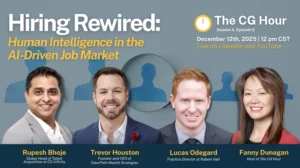Dig Your Heels In: A Working Woman’s Series with Amy Czuchlewski
Amy Czuchlewski grew up around tech. Her father was an engineer, and her brothers and sister followed in his footsteps. After a high school aptitude test pushed her to study Computer Engineering at the University of Michigan, it was a total surprise to her that women were in the minority. “It hadn’t occurred to me that I was going to be in the minority in my classes,” said Czuchlewski. Today, she understands the importance of female exposure in her field. The direction gave her the benefit of blinding her from the gender hurdle in her future. Now, she wants other engineers and tech professionals to understand the power of getting out there and speaking up.
After college graduation, she started work at Motorola. Czuchlewski was one of the first tech executives to work in downloadable apps before mobile phones became human’s third appendage. Her pioneer foundation made her well-positioned to excel in the field.
Today, as a seasoned professional, Czuchlewski works with a nonprofit called Bold Ideas. It pairs technology companies with local schools to help students learn to code. When Czuchlewski hosts the program’s introduction to students, the gender gap in the sign-ups shifts significantly. Czuchlewski typically sees more than 50% interest from girls. Visibility is a powerful tool. Czuchlewski urges other tech professionals to get involved in fostering younger generations. This uptake can help the industry fight a two-to-one male-to-female ratio reported in Skillsoft’s 2021 Women In Tech Report.
More female interest from a young age empowers future women in technology. The gender gap isn’t a women’s problem; it’s everyone’s problem. “The diversity of thought and diversity of voices helps us solve problems better,” said Czuchlewski. Increasing the population of female tech professionals is a huge part of achieving equal representation. The field is poised to be a good fit for working mothers, with flexible working hours and work-from-home opportunities. Working moms don’t have to sacrifice their home life when working in tech.
Unfortunately, there is still a lot of work for active tech professionals. Across the industry, females report experiencing assumptions and being overlooked. Czuchlewski recalled a client meeting where she was mistaken for a creative exec. “A lot of times women aren’t taken seriously in technology, [we’re] told we aren’t serious enough or not technical enough,” she said. A 2022 Statista poll found that 53.8% of women in the field feel the same way.
Finding other professionals who can validate this experience is critical. Building a support group helps women validate their feelings of exclusion. And validation is key to the longevity and health of any career. When seniors mentor their junior counterparts, women can work to bridge those experiences and positions. Equally, new hires should connect with seasoned professionals to start their professional development. “The more we do that, and the more we can reinforce each other’s experiences, is going to make all of us shine even more,” said Czuchlewski.
Beyond mentoring, Czuchlewski has efficient advice for females supporting each other. One of the most practical things women can do is lift each other in meetings. If another woman’s idea is not acknowledged, take up space to credit and repeat her idea, then follow up with something like, “I think that’s a great strategy. Let’s take a moment to discuss.” This strategy will help peers remain visible in crucial moments.
That visibility takes us back to the start of Czuchlewski’s story and the representation she witnessed as a child, which helped her see her future in technology. That same exposure is vital to the growing female tech population. It is up to current tech professionals to be seen to build future generations. And to Empower and amplify peers to make sure they feel seen.









